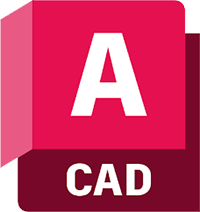Autodesk has abandoned its old classic workspace from AutoCAD 2015 and later versions but you can easily bring it back to its full glory with a few tweaks to your new AutoCAD software.
You can restore the classic workspace in AutoCAD 2015 and later versions using the tips mentioned in the article.
Although I will also recommend you to embrace this change and move on with the new workspace but if you are still not comfortable enough with the change then read on.
I have also prepared this video which explains this tip in detail, but if you prefer the article then continue reading.
Import from the previous version
Open AutoCAD 2014 or any previous version which has classic workspace and change workspace to Drafting and Annotation.
Now type CUI on the command line to bring Customize User Interface window, from this window go to transfer tab and select Save As from Main customization file (acad.cuix) drop-down menu as shown in the image below.
Specify a location where you want to save this file and give it a name, I am naming it as My workspace and click OK.
Unfortunately I don't have a CUIX file to share with you anymore but if you can get your hands on an older version of AutoCAD then you can create one in seconds using the steps mentioned above.

Now go to AutoCAD 2015 or 2016 and type CUI again to bring Customize user interface window.
Go to transfer tab and click on the open button from Customizations in new file panel as shown in the image below.
Locate the cuix file saved in steps above and open it.
You will find all workspaces including AutoCAD classic in the workspaces tree on right.
Drag and drop AutoCAD classic workspace from right panel to left in the workspaces tree, refer image below.
Click on OK to save the settings and exit CUI window.

Now, when you click on workspace switching you will see classic workspace in it and you can seamlessly toggle between classic and other workspaces.
Migrating Custom Settings

You can also migrate custom settings of AutoCAD directly using it’s Migrate Custom Settings option from the start menu.
This migrates AutoCAD classic along with other workspaces of the previous version.
Click on Migrate From a Previous Release option from the start menu as shown in the image above and check user profiles radio button.
70 lessons| Easy Level
If you are absolute beginner of AutoCAD then you can get started right from scratch using this free course.
You can keep other buttons checked if you want to migrate those settings also.
Make sure that previous version of AutoCAD containing classic workspace is selected in the drop-down menu.
In the image above AutoCAD 2013 is selected in the drop-down menu.
Also make sure that previous release of AutoCAD is installed from which you want to migrate settings, look at the image above for reference.

Now open new AutoCAD version and type CUI on the command line and press enter.
Customize user interface window will pop up, select customize tab in CUI window if it is not already selected.
You will see that four new workspaces will be listed there as shown in the image above.
Now delete all migrated workspaces except AutoCAD classic by right-clicking on workspaces and selecting delete option from the contextual menu.
You can also rename "migrated AutoCAD classic workspace" to a shorter name by selecting Rename from the right click contextual menu.
Once you have made all these changes click on OK button to close the window.
Now you will see AutoCAD classic listed in workspace drop-down menu.
Summary
So, as you can see it's just a matter of creating a CUIX file using your old classic workspace and then migrating it to your new AutoCAD.
Still, I would recommend you switch to the latest user interface as it is more user friendly and it's here to stay.
Do let me know in the comments down below if you have questions.


